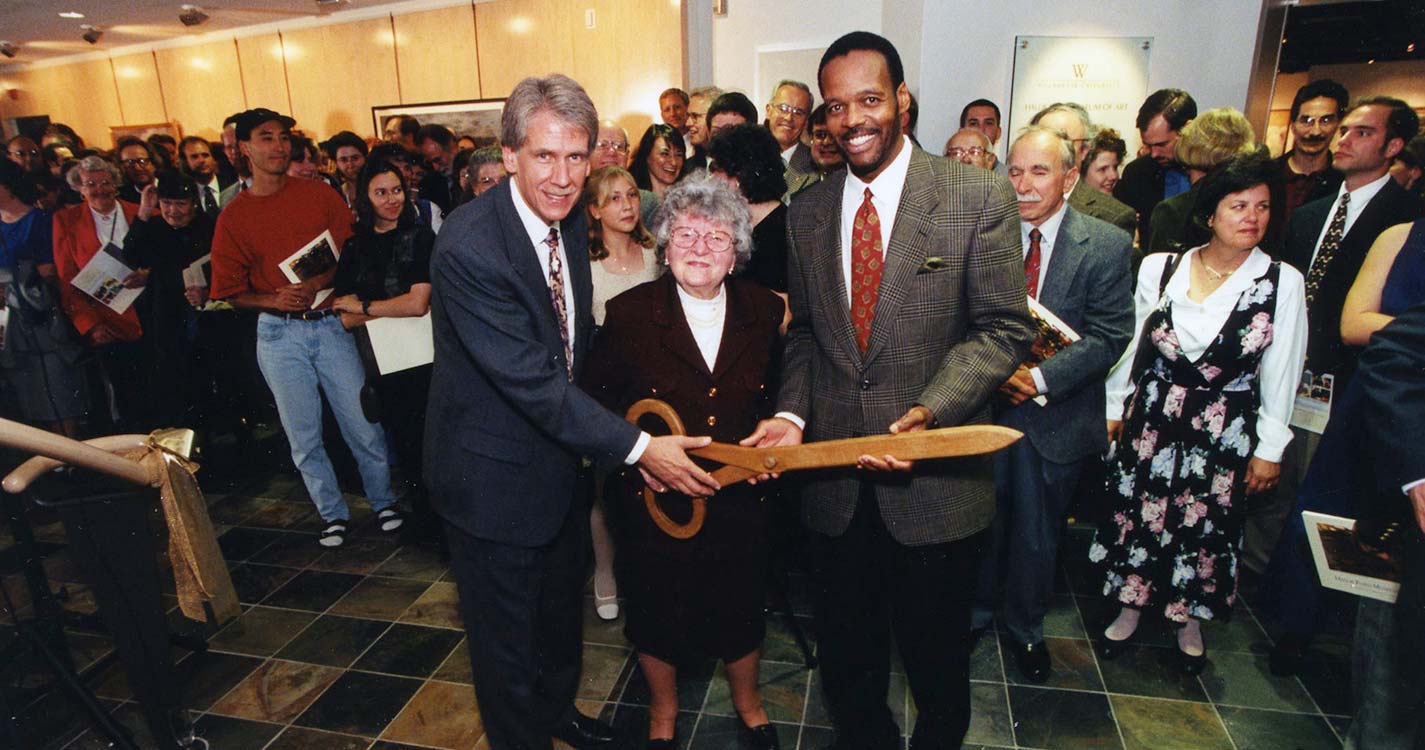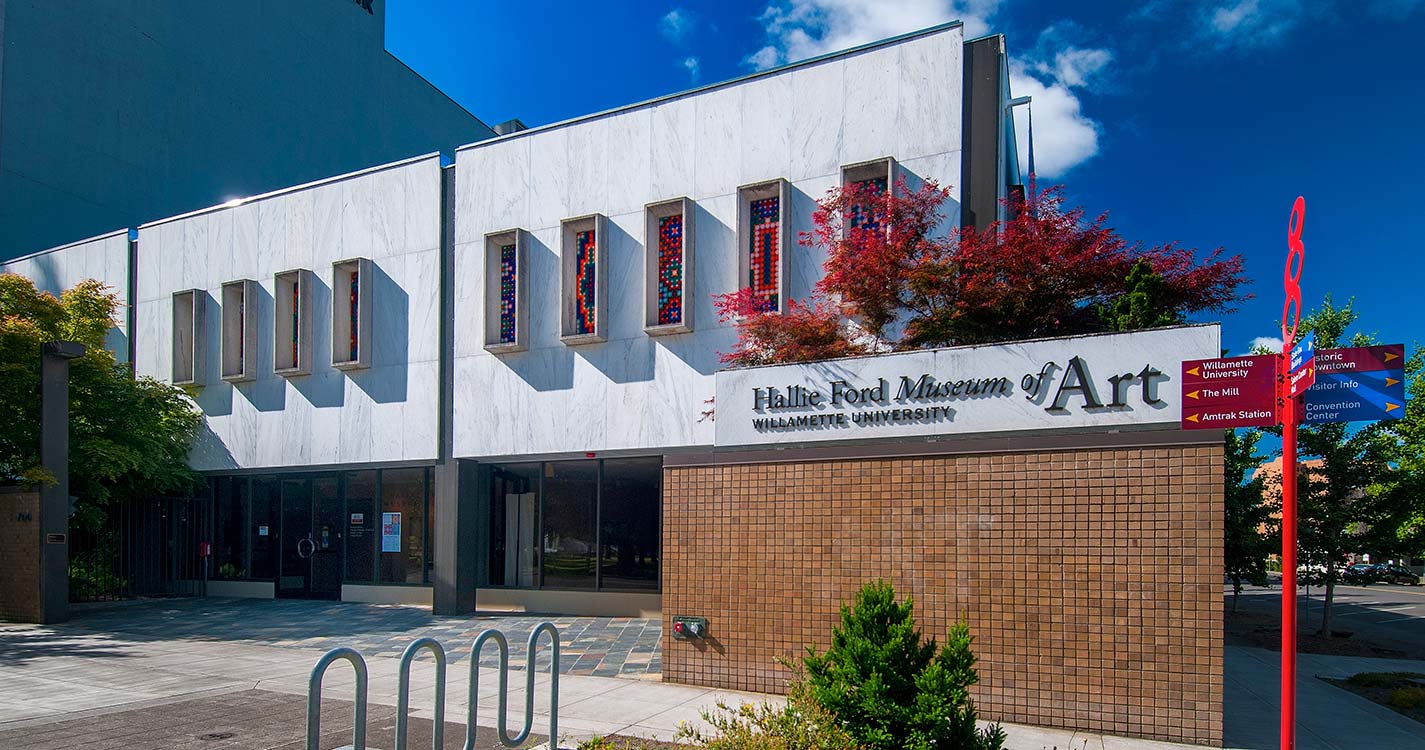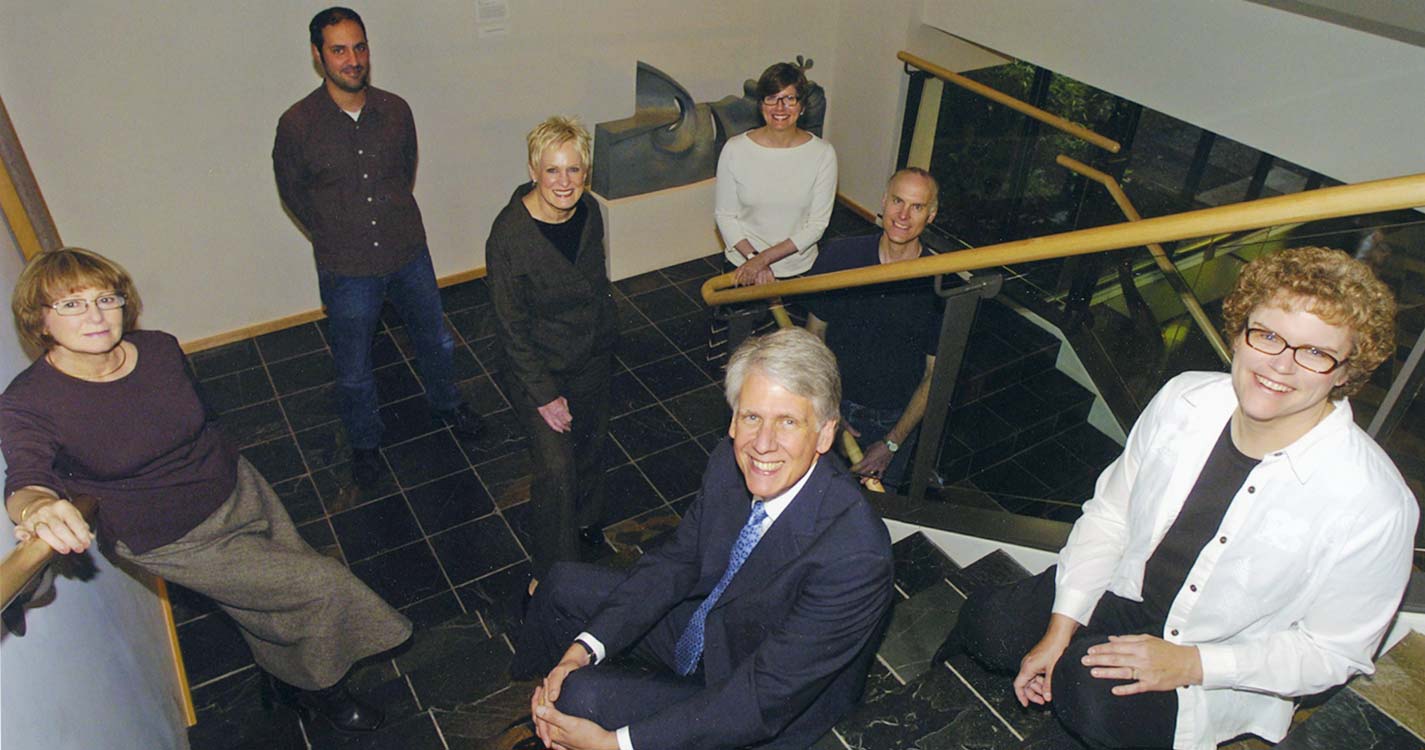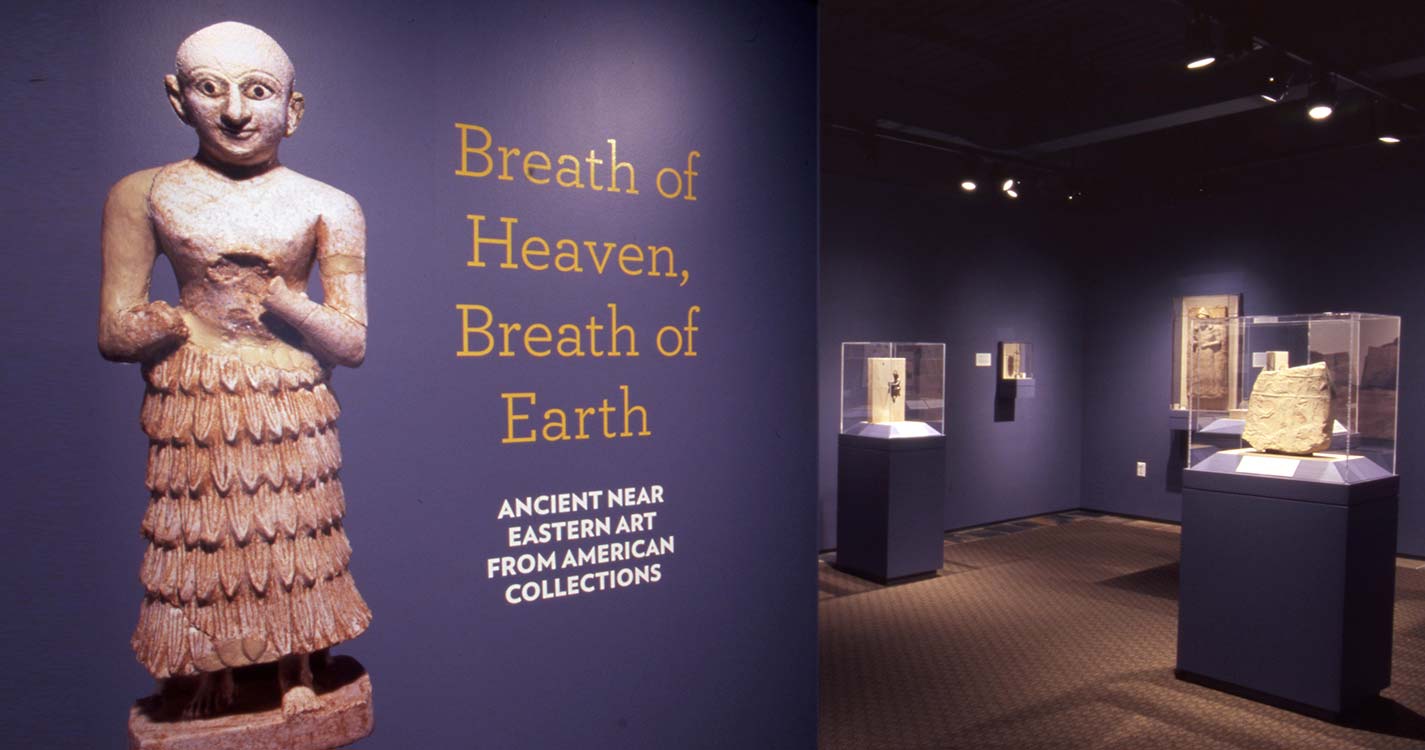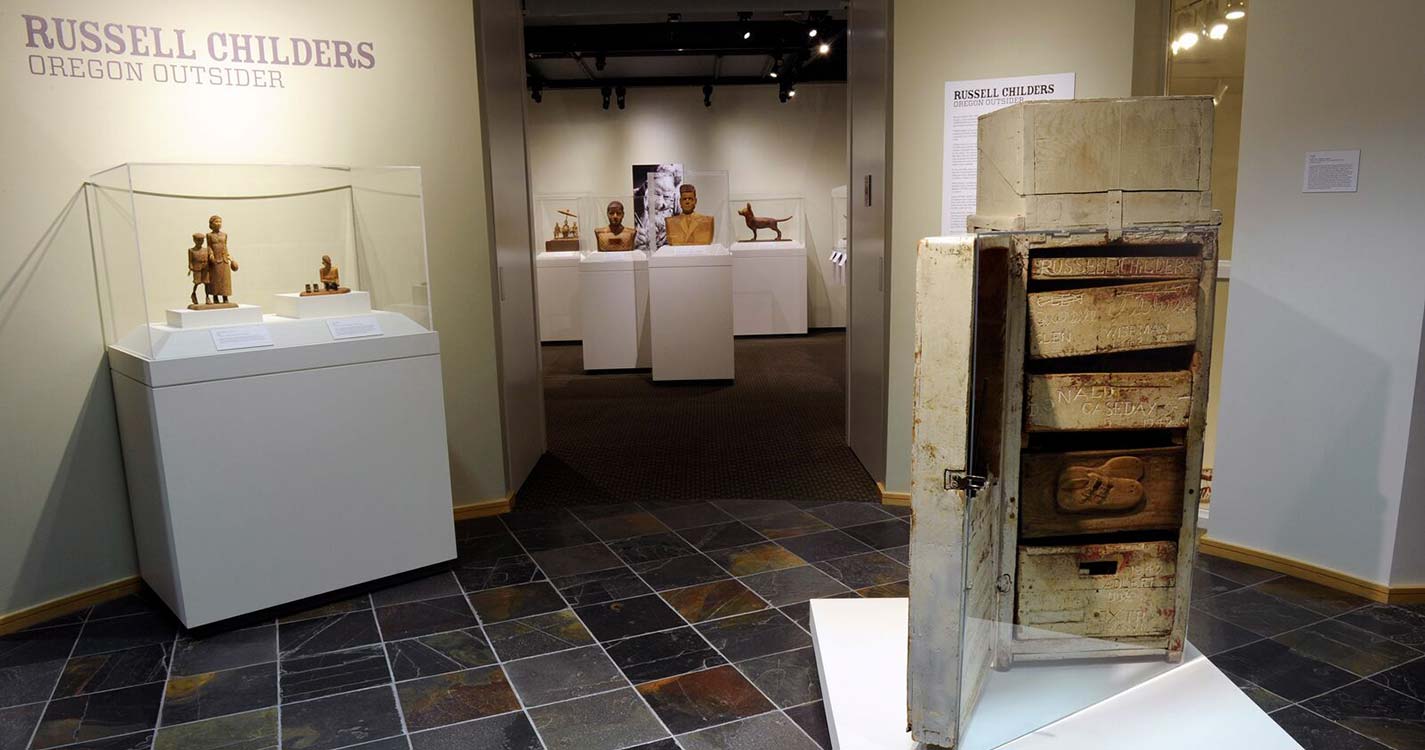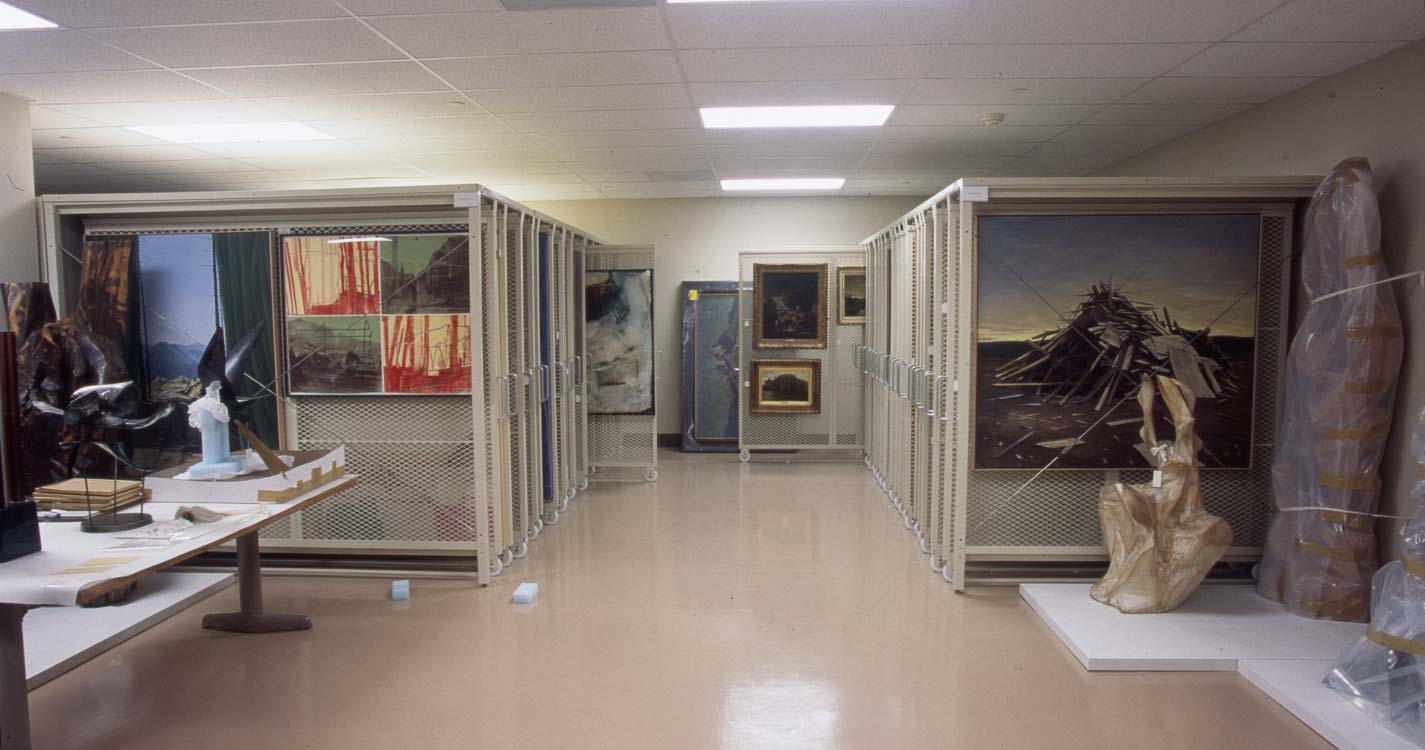Hallie Ford Museum of Art is managed by only eight staff members, but the vast art collection they oversee and their collaborative spirit has made an outsized impact on Willamette and beyond.
Through its exhibitions, collections and publications, HFMA has established itself as one of the premiere venues for regional art. Following Portland Art Museum and the Jordan Schnitzer Museum of Art at the University of Oregon, it is the third largest of its kind in Oregon and among the best academic museums in the nation. Its production so far of 30 books alone makes it one of the most — if not the most — active museum publishers in the Pacific Northwest.
Now celebrating its 20th year, HFMA invites the public to share its success.
During the museum’s anniversary week, Oct. 2–7, HFMA is hosting a series of special anniversary events including gallery talks and lectures. Featured speakers include James Cuno ’73, president and CEO of J. Paul Getty Trust in Los Angeles and a Willamette trustee, and Willamette Professor of Anthropology and curator of Native American art Rebecca Dobkins, one of the museum’s earliest advocates. On Oct. 3, the museum’s official anniversary, guests will enjoy extended hours (10 a.m. to 8 p.m.), cake, tours and a lecture by Director John Olbrantz.
History of growth and expansion
HFMA has far surpassed its humble beginnings.
Initially suggested by Dan Schneider JD ’74 and former art professor Roger Hull to house the university’s art, HFMA opened in 1998 with Olbrantz managing 3,500 works of art.
Today, the collection holds over 9,000 objects — including a Clatsop tribe basket given to J.L. Parris, missionary and early Willamette trustee in the 1840s, as well as paintings by regional artists Carl Hall, Henk Pander and Fay Jones — and many have served as an important resource for several of the museum’s 220-plus exhibitions. Three permanent galleries hold works by regional and Native American artists as well as European, American and Asian art.
When Olbrantz, the former deputy director of the Whatcom Museum of History and Art in Bellingham, Washington, was hired in 1998 to lead HFMA, his vision was specific — he wanted to recognize and honor Pacific Northwest and Native American artists.
He says, “I also knew at the end of the day, if all I could do is create really good, high quality regional exhibitions, that would be OK.”
He never strayed from that ideal and didn’t stop thinking big. In HFMA’s first decade, the museum added staff including Curator of Collections and Exhibitions Jonathan Bucci, finished an $850,000 remodeling project and created a $7.5 million permanent endowment fund. The museum is named after the late philanthropist Hallie Ford, who provided initial funding to buy the building and begin interior improvements.
Olbrantz also brought the world’s art to Salem through special exhibitions that rivaled larger institutions, such as “Breath of Heaven, Breath of Earth: Near Eastern Art from American Collections” in 2013 and a collection of Renaissance drawings that once belonged to an 18th century Italian count. Visitor attendance today has nearly tripled from the late 1990s, when the museum drew 10,000 per year.
More than a museum
Along the way, HFMA became more than just a place to showcase art.
It has attracted speakers like archaeology author Brian Fagan and folk art specialist Jo Farb Hernàndez for special public lectures and it’s become a location for cultural and family events.
Olbrantz says, “It’s a bridge to the community.”
More importantly, HFMA has also become a resource for students, faculty and the liberal arts curriculum.
Students can intern or work for the museum, while some faculty research objects in the permanent collection or provide their written academic perspective on a work for a rotating exhibit. Classes can also visit exhibitions.
Faculty curators like Dobkins help build HMFA’s collection and also contribute to the museum’s many publications that document regional art history. That sort of relationship — between faculty curators and the museum — has helped make us who we are today, says Bucci.
He says, “We are a fully engaged and important member of the museum world in the Pacific Northwest.”

